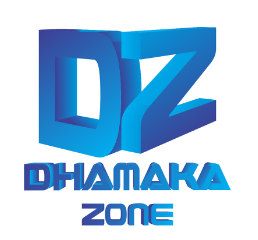Traditional document-keeping systems have long been the backbone of organizational operations, managing the whole lot from financial transactions to non-public statistics. However, the arrival of the blockchain era has brought a unique model that demands situations of the popularity quo. This article delves into the specific capabilities of blockchain that set it aside from conventional record-retaining answers, exploring its capability to restructure how we manage and trust statistics.
Understanding Conventional Record Keeping
Conventional file-retaining systems are mainly centralized, whether or not they function thru paper-based strategies or digital databases. These structures are typically managed by means of a government, along with a business enterprise’s IT department or a central authority agency. While this centralization permits for truthful control and oversight, it also gives full-size vulnerabilities.
Centralized databases may be goals for hacking, facts manipulation, and fraud. Moreover, these systems frequently involve a couple of intermediaries that may cause inefficiencies, extended fees, and slower response times. The reliance on third parties will increase the danger of errors and decrease the transparency of transactions, regularly leaving individuals and smaller entities at a downside.
Key Features of Blockchain Technology
Blockchain technology introduces several center features that essentially distinguish it from traditional file preserving. Decentralization method that the blockchain operates on a peer-to-peer community, efficiently casting off the want for a government. This issue by myself appreciably enhances system safety and resilience, as there is no unmarried factor of failure.
Immutability is another important function; once statistics is recorded on a blockchain, it cannot be altered without consensus across the community, making fraud and unauthorized facts manipulation nearly not possible.
Furthermore, blockchain networks are inherently obvious; all transactions are seen to all people with admission to the community, fostering an environment of consideration and responsibility. Lastly, consensus mechanisms together with Proof of Work or Proof of Stake make sure that every one transactions are tested with the aid of multiple parties before they’re added to the ledger, which prevents fraudulent sports and guarantees the integrity of the information.
Comparative Analysis: Blockchain vs. Conventional Systems
Comparing protection, blockchain’s decentralized and immutable ledger makes it appreciably extra stable than conventional databases, which can be liable to cyber-attacks and insider threats. In phrases of performance and price, blockchain reduces the need for intermediaries that could extensively decrease transaction charges and accelerate strategies. For example, in financial offerings, blockchain enables faster transactions that may be completed at a fraction of the prices associated with traditional banking systems. However, blockchain isn’t without its challenges; issues along with scalability and high power intake of positive consensus mechanisms (like Proof of Work) pose massive hurdles that need to be addressed.
Use Cases and Practical Examples
Blockchain’s versatility lets in its software throughout various sectors. In monetary services, blockchain provides a stable platform for executing and recording transactions, providing offerings like move-border payments and smart contracts. In delivery chain management, it offers unparalleled traceability, permitting organizations to track the lifecycle of merchandise from manufacturing to shipping, which enhances transparency and client belief. In healthcare, blockchain can secure patient statistics whilst ensuring they are easily reachable to legal employees. For the general public quarter, blockchain gives capacity enhancements within the integrity of structures along with balloting and land registries, probably reducing fraud and growing transparency.
Challenges of Implementing Blockchain
Despite its blessings, blockchain implementation faces technological, regulatory, and operational demanding situations. The complexity of blockchain generation may be a barrier to adoption, requiring widespread knowledge and assets. Regulatory uncertainties and the lack of standardization also can preclude deployment, especially in sectors like finance and healthcare, which might be heavily regulated. Furthermore, the present day scalability problems and the strength intake related to blockchain can limit its practicality for tremendous use.
Future Outlook
As blockchain generation keeps adapting, answers to its present day barriers are in all likelihood to emerge. Increased adoption should drive extra robust regulatory frameworks, and non-stop technological advancements may also deal with issues like scalability and power performance. The increasing use of blockchain may want to result in a substantial shift in how international file-retaining and transactions are managed, making approaches extra obvious, green, and steady.
Conclusion
Blockchain generation gives a compelling opportunity to standard file-keeping systems, characterized by greater security, performance, and transparency. While there are demanding situations to its substantial adoption, the capacity blessings make it an appealing option for future systems. Thoughtful implementation paired with non-stop innovation ought to see blockchain extensively remodeling the panorama of document retaining.

 TECH6 months ago
TECH6 months ago
 SPORTS6 months ago
SPORTS6 months ago
 HEALTH6 months ago
HEALTH6 months ago
 ENTERTAINMENT6 months ago
ENTERTAINMENT6 months ago








